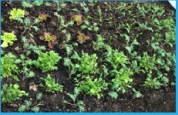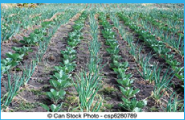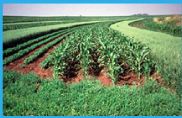 Intercropping
Intercropping
There are four (4) sub-categories of intercropping:
 |
Mixed Intercropping:
Growing two or more crops simultaneously with no district row arrangement. |
 |
Row intercropping:
Row intercropping is the growing of two or more crops at the same time with at least one crop planted in rows. When all the crops are grown in rows a specific ratio is maintained. |
 |
Strip cropping:
Growing of two or more crops of different families at the same time in small portions arranged side by side. It is ideal for vegetables. The crops should be grown wide enough to permit separate crop production using machines but close enough for the crops to interact. |
 |
Relay Intercropping: Planting a second crop into a standing crop at a time when the standing crop is at its reproductive stage but before harvesting. Example: Intercropping soybean with ripened winter wheat |
Advantages of intercropping
|
|